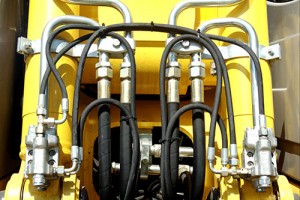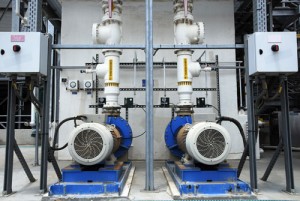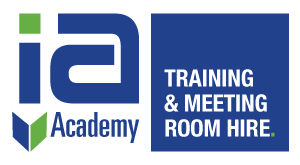There are major differences between hydraulic and pneumatic systems, but also a number of similarities. Both systems, hydraulics and pneumatics, work as an actuator using a pump, and are controlled by valves to convert fluid pressure to mechanical motion. The force that is applied at one point is transmitted to another point via an incompressible fluid. This is usually a type of oil for hydraulics and air for pneumatics.

Hydraulics
Hydraulics use fluids which are not compressible and maintain their consistency. Hydraulic systems are used in many industries, especially by the automotive industry. They are also used in elevators, dams, machine tools, amusement parks, and turbines. Hydraulics are not used for applications such as food preparation, as there is a risk of oil contamination.
Hydraulic systems tend to be quite large and complex. Hydraulics also take up more room as they needs a reservoir to hold the fluid which will flow through the system. On account of their large components, more pressure is needed is for hydraulic systems. This also tends to make them more expensive.
As they are usually bigger, hydraulics can take on larger and heavier loads than pneumatics as oil is not compressible. All this means that hydraulics are usually slower than pneumatics as oil is viscous and so takes more energy to move through pipes.

Pneumatics
Pneumatic systems are commonly powered by dry or lubricated compressed air or inert gases. Pneumatics are mainly used in shock absorption because gas is compressible so equipment is less susceptible to shock damage. Pneumatics are used in many fields including robotics, dentistry, mining and construction. Unlike hydraulics, pneumatics can be used in the food, pharmaceutical, and biotech industries because systems are cleaner and there is less risk of contamination.
Pneumatic systems can be quite simple, often just on/off switches. This makes pneumatics cheaper than hydraulics, plus air is cheap and easy to store compared to oil or any other liquid. When it needs to be disposed of it can also be expelled into the atmosphere.
Pneumatics, faster, offers rapid movement of cylinders at smaller size due to air compressor flow rates which flow quickly with little resistance.
Summary
Medium
Hydraulics – liquids, oil, water or a mixture
Pneumatics – Gas, usually air
Speed
Hydraulics – Slower, more complicated larger systems
Pneumatics – Faster, simpler and quicker
Cost
Hydraulics – Expensive – more complex and larger
Pneumatics – Cheap – no reservoir needed for storage
Pressure
Hydraulics – Utilises around 3000 to 5000 psi (up to 10000 psi)
Pneumatics – Utilises around 100 psi (up to 150 psi)
BFPA Training – Indanc Academy
Industrial Ancillaries Academy runs a number of courses in partnership with the BFPA, designed for anyone who works with hydraulics.
Foundation Safety Course
Basic hydraulics health and safety course.
Hose Assembly Skills Course
A 2-day course on hose assembly procedure, including routing and installation.
Hose Integrity, Inspection and Management Course
Health and safety assessment training including risk analysis and competence.
Small Bore Tubing Integrity Course
Safety training in the manufacture of small bore tubing assemblies.
Call us on 01246 242050 or get in touch via our Contact page to find out more details about our courses and course dates.
Other related articles
Hydraulic Hose Safety Issues
Find out how important safety is for the hydraulic hose industry. How and why the majority of accidents happen and how to prevent them.
What is the Difference between Pipes and Tubes?
Do you know what the difference is and does it matter? The answer is ‘yes’, especially if you work in engineering or construction. Find out why it matters and when you would use tube or pipe by reading this article.
What is the Difference Between NPT and BSP Fittings?
There are a number of different sizing standards used throughout the world. Do you know which one you should use and what the difference is between them? No? Then read this article and find out.
The Principles of Pipe and Tube Bending
What happens to metal when you bend it? Find out about bending processes and problems from this article.
What are Industry Standards
Unsure about what standards are relevant? Check out this article on which standards are used in the hydraulic and pneumatic industries.
Identifying Connection Types
A guide to identifying fittings and connections. Essential for the correct connection of systems.
Hose Lifecycle
A quick guide to the life of a hose from purchase, installation, operation and replacement.
